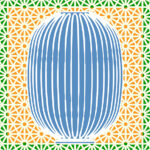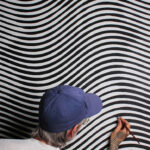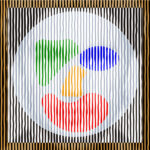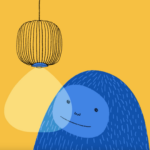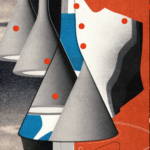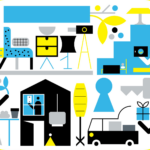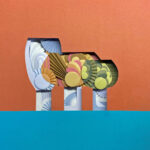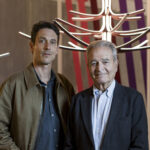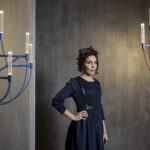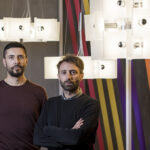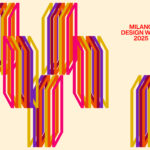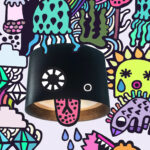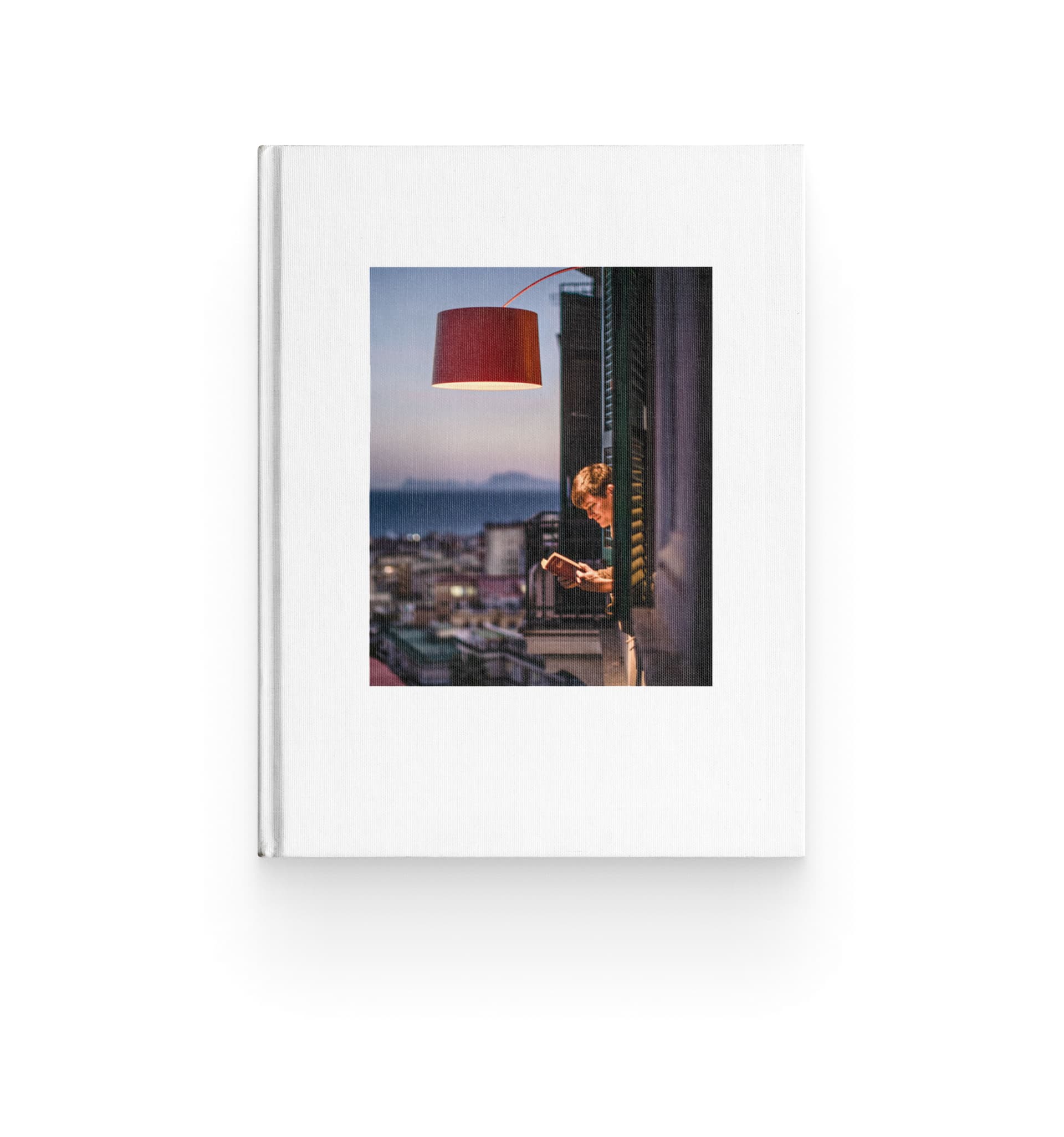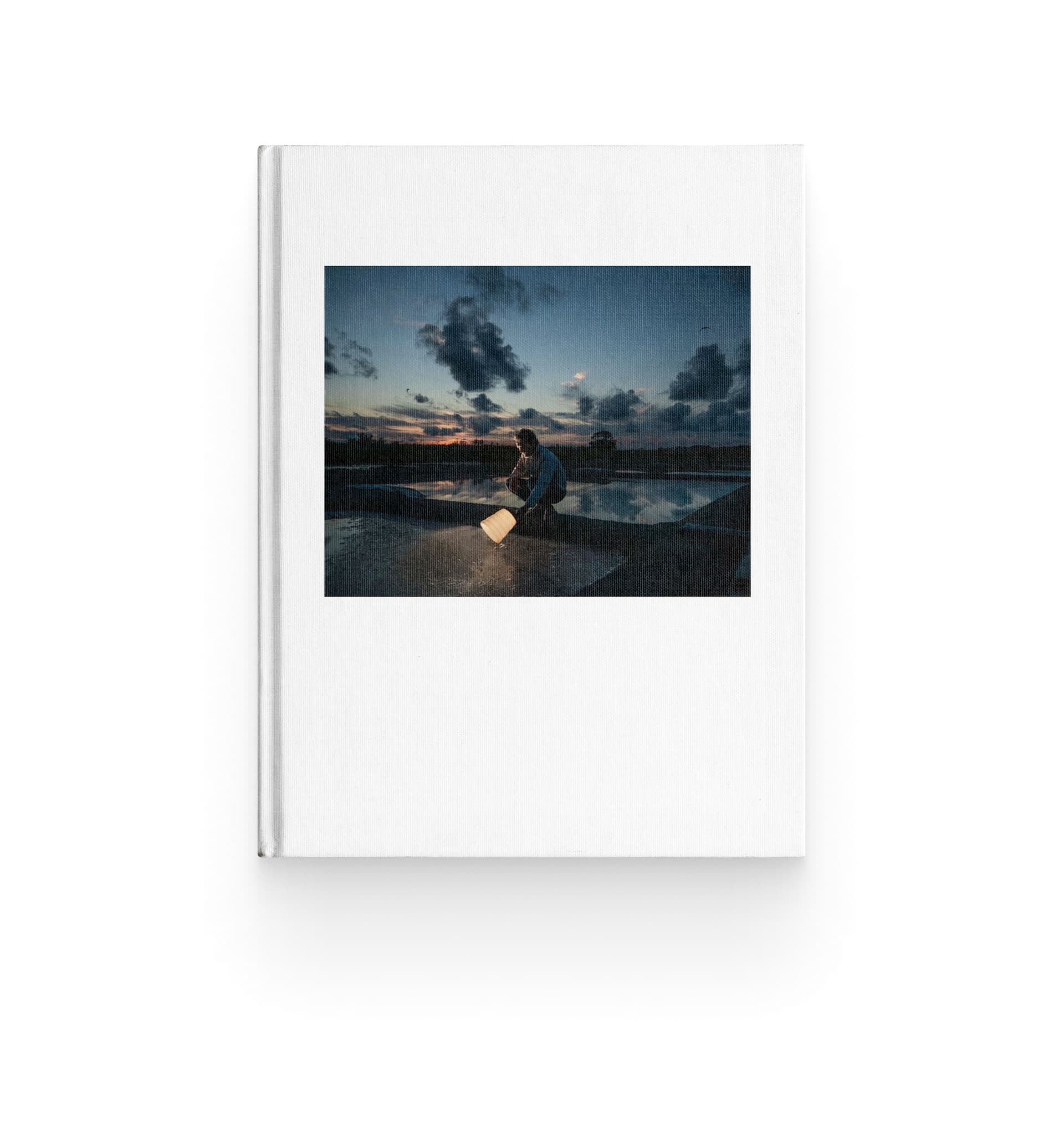Illuminating the Unseen: Lee Wagstaff’s optical illusions for “What’s in a Lamp?”
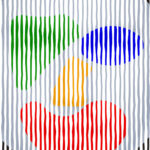
The new series from the social editorial project “What’s in a Lamp?” invites us to shift our perspective. Lee Wagstaff’s geometric patterns reveal more than meets the eye, as alternate realities emerge beyond the surface and fairy characters and tales come to life within Foscarini lamps’ shapes.
Lee Wagstaff’s artistic journey, from the quiet introspection of childhood sketches and his early fascination with scientific drawings to his formal education at St. Martins and The Royal College of Art in London, is characterized by a vibrant exploration of geometric patterns. His distinctive style is rooted in the rich interplay of forms and motifs. Wagstaff’s art is all about observation. His unique aesthetic, reminiscent of Optical Art’s illusions, Surrealism’s dreamscapes, and Pop Art’s vibrancy, transcends ordinary perception, evoking a sense of wonder and curiosity. Upon closer inspection, his creations reveal hidden depths and intricate details. Step back, and you can spot hidden faces, characters, and stories.
In his series for Foscarini’s “What’s in a Lamp?” project, the British artist crafts a parallel reality inhabited by magicians, jesters, and spirits whose enigmatic faces subtly emerge amidst geometric, colorful patterns. Within Foscarini’s lamp collection, where each piece has a story to tell, Wagstaff finds a segue for storytelling, driven by relentless innovation and imagination. From the mystical genie of Plass to the vibrant jester Orbital, from the many-eyed monarch in Caboche to the spirit sisters in Spokes, Wagstaff infuses the lamps of the collection with soul.
“I try to portray a sense of mystery or essence, inviting viewers to question their senses. I start by imagining faces that gradually morph into characters. I merely suggest their presence, allowing the viewer to build the character in their own mind and delight in the discovery.”
Lee Wagstaff
Discover Lee Wagstaff’s full series on @foscarinilamps Instagram, and be inspired by the artist’s perspective through our interview, offering insight into his vision and artistic process.
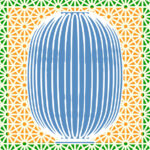
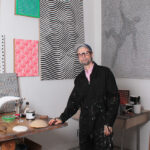
Tell us a bit about yourself and your journey as an artist. Where did it all start? Is there a story behind how you became an artist?
I was a very quiet, introverted child, so I used to draw a lot, mostly nature. At school, I really loved science classes, not for the knowledge but because I loved illustrating my homework. Art was something I drifted into as I had some artistic friends, so I would go to evening classes with them. Eventually, I went to St. Martins and then The Royal College of Art in London. For me, art was not a career; it was something I did as a way to observe the world more intensely.
Your artistic aesthetic is incredibly unique, featuring hypnotic patterns that reveal realistic faces when observed from a distance. How would you personally describe your distinctive style?
People ask me this a lot. I have liked patterns and geometry for as long as I can remember; this perhaps goes back to my love of making scientific drawings. In biology, there are a lot of patterns. As I began to study art, I wanted to explore more hard-edge patterns. In my work, there are elements of Optical Art, Pop Art, Surrealism, and abstraction. I would say that I like to work within a traditional framework but see if I can push myself technically and intellectually.
We are curious to know more about how your unique expressive style evolved: did it develop naturally over time, or was it a result of deliberate research and experimentation?
I experiment a lot, and it took years to develop into how I make art now. I hope it will keep developing. Believe it or not, my long-term aim is to make the simplest art I can, but I feel it has to get more complex first.
Why are patterns so prominent in your art? What significance do they carry for you?
Patterns are indicators that help to predict things. I am interested in all kinds of patterns, not just decorative patterns, but also behavioral patterns or finding patterns in history. I am always trying to make connections between seemingly unrelated objects, events, or people.
What is your creative process like when you’re working on your artworks? Do you follow specific rituals or habits when dedicating yourself to drawing?
Yes, I am very ritualistic about the times of day I work, where I work, the materials I use, etc. I usually work on at least six paintings at once, possibly more. Many pictures are destroyed.
Can you share insights into your creative process and storytelling, especially in this series?
This was an interesting project, more challenging than I expected. I have never had to express someone else’s artistic vision through my own stylistic lens. I hope that I have been respectful to the designers yet also true to my own vision. This project pushed me to be more experimental with color but also to really imagine that these hybrid objects/characters could really exist. Usually, I begin by closely observing patterns and shapes, then I imagine faces, and then the faces begin to take on a character. The focus of my art is to try and portray some kind of mystery or essence, but I also want the viewer to at first distrust their senses, then hopefully delight in what they think they may have seen. I let the viewer build the character in their mind; perhaps they are reminded of someone they know or a face they have seen somewhere.
Can you describe the characters you envisioned for the “What’s in a Lamp?” series and explain the inspiration behind each one?
As soon as I saw Foscarini lamps collection I could see that the designers also love pattern and form. I immediately began to see faces within or around the lamps and to build characters in connection to the brilliant names of the lamps.
Plass is a magic spirit, like a genie inhabiting a vessel, watching from beneath the crystalline surface, waiting to grant a wish or make a prophecy. Orbital is a vibrant jester, always there to bring joy with color and form, a steady companion for the good days and the bad. Gregg is a Goddess born of a cosmic egg who resonates and illuminates; her beauty is eternal, her glow supernatural. Spokes are three shy spirits, sisters who only appear to those with the sharpest imaginations who are willing to watch and wait. As the shadows move, the sisters appear. Caboche is a many-eyed monarch. Her diadem covers her face, each bead a lens. She is all-seeing, all-knowing. A little of her beauty and wisdom is bestowed on all who appear in her presence. Sun Light of Love is a true celestial being. By day, a spiky, curious silhouette, a planet with hidden depths; at night, a burning star, a true beacon of love.
Among the artworks in your “What’s in a Lamp?” series, do you have a personal favorite? If so, what makes it stand out for you?
That is quite hard; I feel very connected with all the six lamps I portrayed. I spent a lot of time looking at them and imagining what I could add to those forms. If I had to choose one, it would be Gregg just because it is a unique geometric form in its own right, which is a building block to create any pattern. It is elegant in its simplicity and has such a charming and calming presence. Wherever it sits, it has a quiet, gentle power to add to its environment, whether it is inside or outside, large or small.
Have you ever explored incorporating AI into your artistic process? From your perspective, how might AI contribute to pushing the boundaries of artistic innovation and expression?
I have used Generative Adversarial Networks (GAN) to create unique symmetrical faces for my paintings. With the GAN system I used, one could add faces and ‘breed’ them with the thousands of faces that the network had been trained on. So I could introduce elements such as a family member or the face of Mona Lisa. For me, it is just a tool like Photoshop or a pen.AI programs at the moment are fun and can help with many projects. At first, AI is expansive, allowing many more people to participate in the world of creating images and ideas. It can create content, but it does not have imagination, and that is something that cannot be learned at the moment. The way popular AI platforms work is a kind of predictive reordering of data points. To me, it is quite amazing, especially the speed, but the results are mostly disappointing because most of the results are very populist, even predictable.
What is creativity for you?
For me, creativity is starting with nothing or very little in front of you and then bringing an idea from a thought into the world that might be shared or used. I suppose it’s about solving a problem, but not always by the simplest or most obvious way.
